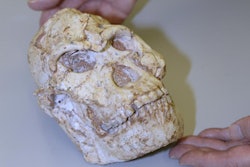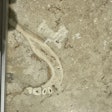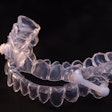Ancient humans used toothpicks nearly 1.8 million years ago, according to a new study in the Proceedings of the National Academy of Sciences (October 7, 2013). The study findings also help explain the diversity found in hominid teeth, according to the researchers.
Swiss paleoanthropologists and researchers from Finland and the Republic of Georgia studied early Pleistocene hominid mandibles from the Dmanisi archeological site in Georgia and found evidence of periodontal disease caused by repeated use of what must have been a basic toothpick, according to a BBC story.
The researchers analyzed four mandibles from one of the biggest collections of well-preserved early human remnants in the world. The Dmanisi site has been valued as an important place to look at how hominids migrated from Africa.
The researchers used a new forensic approach to look at variations on the teeth of hominids thought by some to be early European ancestors. Until now it was unclear why there was so much diversity in the Georgian hominid mandibles. The Georgian hominids lived about 1.77 million years ago and represent an early expansion of human ancestors outside Africa.
The team quantified the effects of heavy tooth wear and wear-related bone remodeling on mandibular variation. Using modern hunter-gatherer populations as a reference, they found that features such as dental arcade form, mandibular corpus height, and symphyseal inclination changed substantially with progressive tooth wear.
Lead study author Ann Margvelashvili, PhD, from the University of Zurich, said scientists dealing with fossil hominid mandibles should pay close attention to tooth wear and the fossil individual's age. Progressive tooth wear triggers bone remodeling processes that substantially modify the shape of the mandible during an individual's lifetime, she noted.
The individual who used a toothpick had damaged the area between the tooth area and the gum that produced a small cylinder-shaped lesion. When researchers inserted a toothpick in the area, it went through the space, according to Margvelashvili. Their findings provide the first clear evidence for toothpick-induced local periodontitis.
Peter Ungar, PhD, the chair of the anthropology department at the University of Arkansas, said toothpick markings are not uncommon in fossil hominids from the time period, but the study introduces a new approach to paleoanthropology.



















